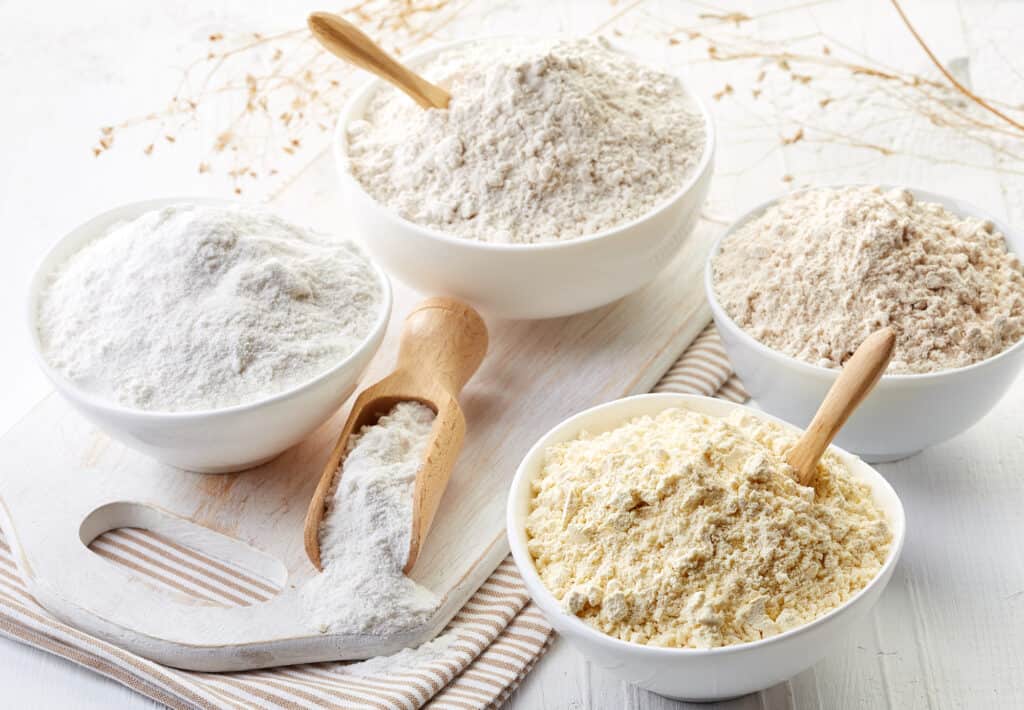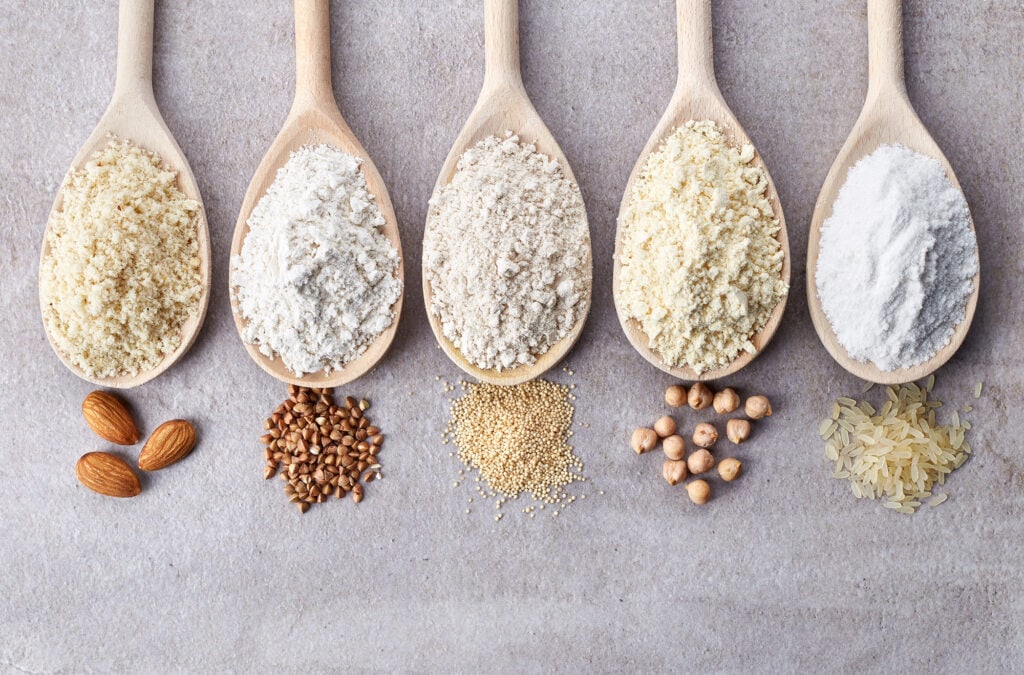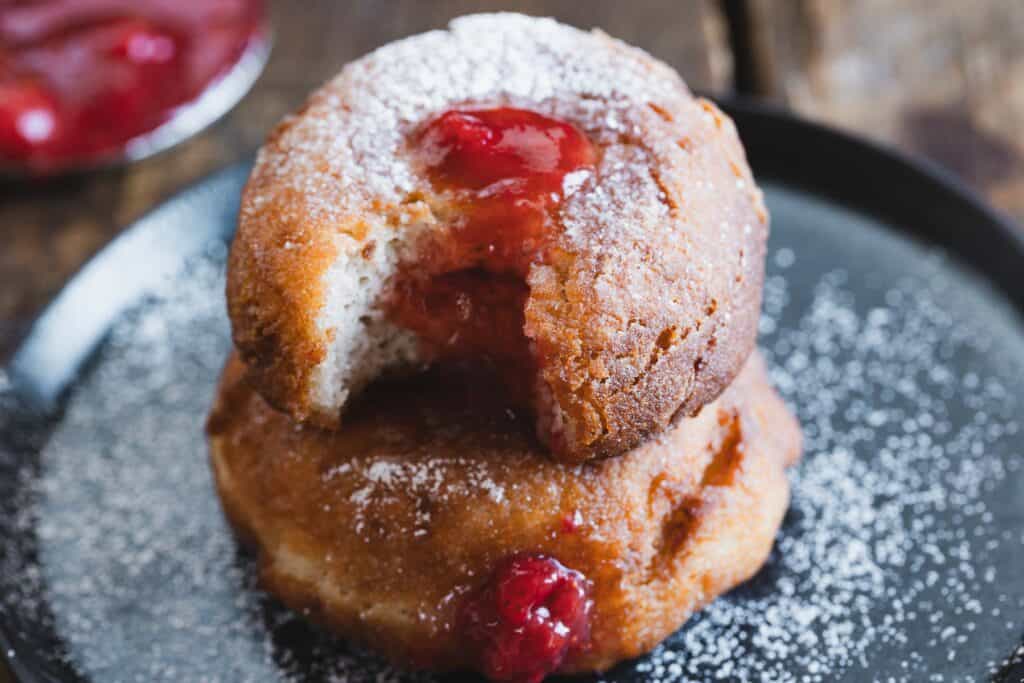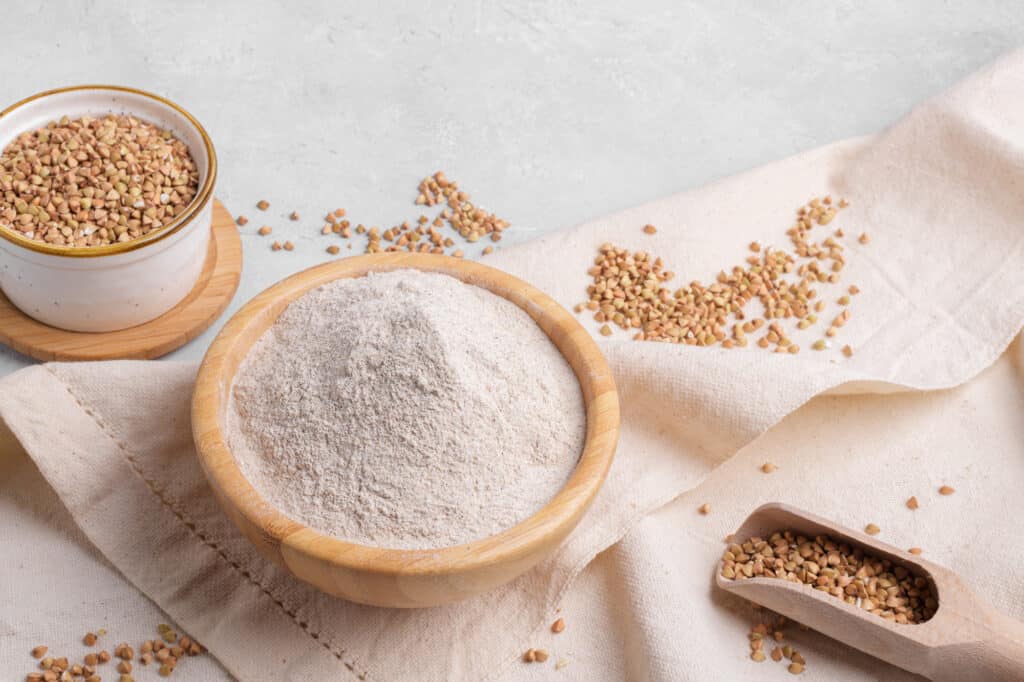Gluten-free all-purpose flour has emerged as a staple in the pantries of those seeking to avoid gluten due to celiac disease, gluten sensitivity or personal preference. But these all-purpose blends rarely act exactly like wheat flour and often leave home bakers wondering what went wrong. This easy guide seeks to dispel the myths surrounding gluten-free all-purpose flour blends and give you some easy, actionable tips to becoming expert gluten-free bakers.

Understanding gluten-free all-purpose flour
Gluten-free all-purpose flours are blends of several finely ground gluten-free grains and starches that seek to mimic all-purpose wheat flour. When carefully formulated, they aim to replicate the functional properties of wheat flour, such as binding and leavening in baking applications, using non-wheat-based ingredients.
Due to the rise in gluten-free diets across North America, manufacturers have begun offering a variety of gluten-free flours that promise to deliver taste and texture comparable to their gluten-containing counterparts. Renowned brands like Bob’s Red Mill and King Arthur Baking provide options that cater to versatile cooking and baking needs. These products enable consumers to enjoy a wider range of food choices without compromising on quality or flavor. But are they actually the same as traditional flour? Trial and error have shown that unfortunately, that promise is often far from reality.

The ingredients of gluten-free flour blends
Gluten-free flour blends are crafted to mimic the properties of wheat flour without gluten, providing a suitable gluten-free alternative for those with dietary restrictions. Typically, these blends include a combination of gluten-free grains and starches to achieve a balance similar to that of traditional flour. Common components of gluten-free blends are:
- Potato starch: Adds moisture and helps with binding the ingredients.
- Tapioca starch: Provides elasticity and chewiness to baked goods.
- Xanthan gum: Often included to emulate the binding quality of gluten. If your flour blend does not contain xanthan gum, you will need to add it separately, as gluten-free baked goods collapse without it.
- Rice flour: Serves as a base with a neutral flavor; often finely milled to avoid a gritty texture.
“As someone who has been gluten-free for over 6 years, finding the right flout blend is crucial to your baking! Each gluten-free flour is made with a different mash-up of ingredients which means they all react slightly differently in terms of absorbing liquid. Find a gluten-free flour you enjoy and get used to using it so that your baked goods come out perfect every single time.”
— Shelby, Fit as a Mama Bear
Baking tips

Successful gluten-free baking requires a blend of gluten-free grains and additives to mimic the texture and structure that gluten provides. Over years of gluten-free baking, several rules have become apparent to make your use of gluten-free all-purpose flour foolproof.
Always add gum
Always use xanthan gum or guar gum as binding agents in gluten-free baked goods to prevent crumbling. If your flour blend doesn’t contain either, add them manually — but be very sparing. ½ or 1 teaspoon is usually enough.
Gluten-free all-purpose flour is not just for baking
These blends are also perfect for thickening sauces, and creating roux and breading foods. Its neutral flavor ensures it can seamlessly integrate into savory dishes without altering the taste profile.
Follow the recipe
Your best advice when baking gluten-free flour is to search out a specifically designed gluten-free recipe. When adapting conventional recipes to be gluten-free, one should begin by replacing the wheat flour with a gluten-free flour mix one-to-one — but other adaptations will likely be necessary.
Read the ingredients
This may sound obvious, but it’s important to remember that different flour mixes will have different tastes and properties based on their ingredients. Check the list, avoiding mixes that have high amounts of chickpea flour, for example, when making delicate layer cakes.
Filled with appetizers, salads, sides, mains and desserts, Food Drink Life's cookbook will become your favorite!
- Easy and delicious recipes from a variety of top chefs and recipe developers.
- Bright, colorful pictures on every page.
- Printer-friendly recipes that you can download instantly to your device.
- Printable shopping list and a kitchen conversion sheet.
Add liquid
Gluten-free flour blends absorb more liquid than wheat flour. Therefore, increasing the moisture with more eggs or water might be necessary when baking with gluten-free all-purpose flour blends. Experiment with adding a touch more oil, butter, full-fat milk, yogurt or sour cream to create a nice, moist crumb structure that won’t be too dry or prone to falling apart.
Add baking powder
Gluten-free all-purpose flour blends can be dense and heavy. Try adding more baking powder to lighten the texture by creating air pockets for proper rising, giving the batter a lift to achieve its maximum volume in the oven.
Overmix gluten-free batter
Unlike traditional baking, where gluten can toughen due to too much mixing, extra mixing helps gluten-free flour incorporate ingredients and fully absorb liquid. Mix your gluten-free batters a bit extra, helping them to achieve even distribution and hydration that leads to a light, airy texture.
Give it a rest
Gluten-free batters and doughs need more time to absorb liquid. Let your dough rest for 30 minutes after mixing, resulting in a better rise in the oven and a much softer texture.
Things to remember

With these tips and information, your baking with gluten-free all-purpose flour should become much easier and more intuitive. Experiment with different mixes before choosing your favorite, but remember that different recipes may require different flour mixes — after all, gluten-free cakes and bread have very different textures and qualities. When using a gluten-free all-purpose flour blend, always keep a few key points in mind:
- Measure accurately: Use a kitchen scale to avoid mistakes in volume and prevent a dense or dry finished product. Even a $10 kitchen scale can work wonders.
- Binding agents: Traditional gluten provides elasticity and structure. In its absence, gluten-free alternatives like xanthan gum or psyllium husk may be required for recipes to retain their structure.
- Hydration: Gluten-free flours often need more liquid. Batters and doughs may appear looser than their gluten-containing counterparts, but this is normal.
- Resting time: Allowing the batter to rest for about 30 minutes before baking can improve the texture and eliminate grittiness.
- Mixing: Over-mixing can lead to dense and tough results. Mix just until the ingredients are combined.
Ksenia Prints is a food writer, blogger, photographer and recipe developer from Montreal, Canada. She blogs over At the Immigrant’s Table, a food blog showcasing healthy, beautiful international recipes for adventurous home cooks. She loves to highlight ethnic cuisines and immigrant cultures by working with chefs from relevant countries and adapting those recipes to gluten-free, vegan, vegetarian, sugar-free and other dietary restrictions.
